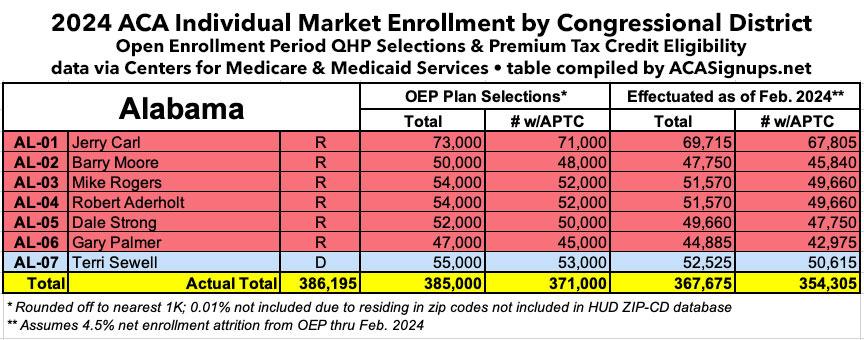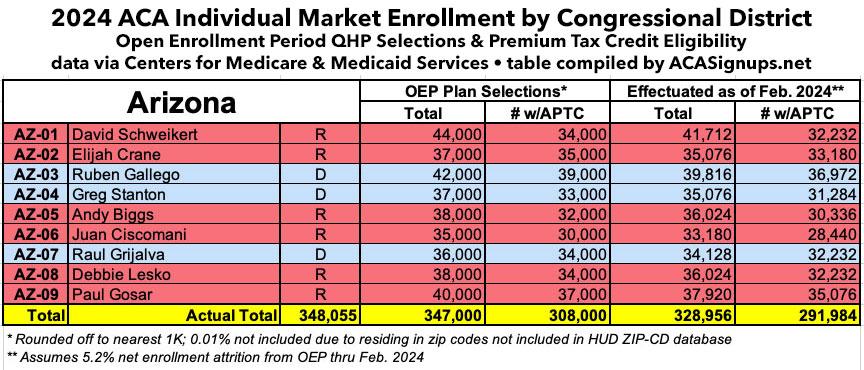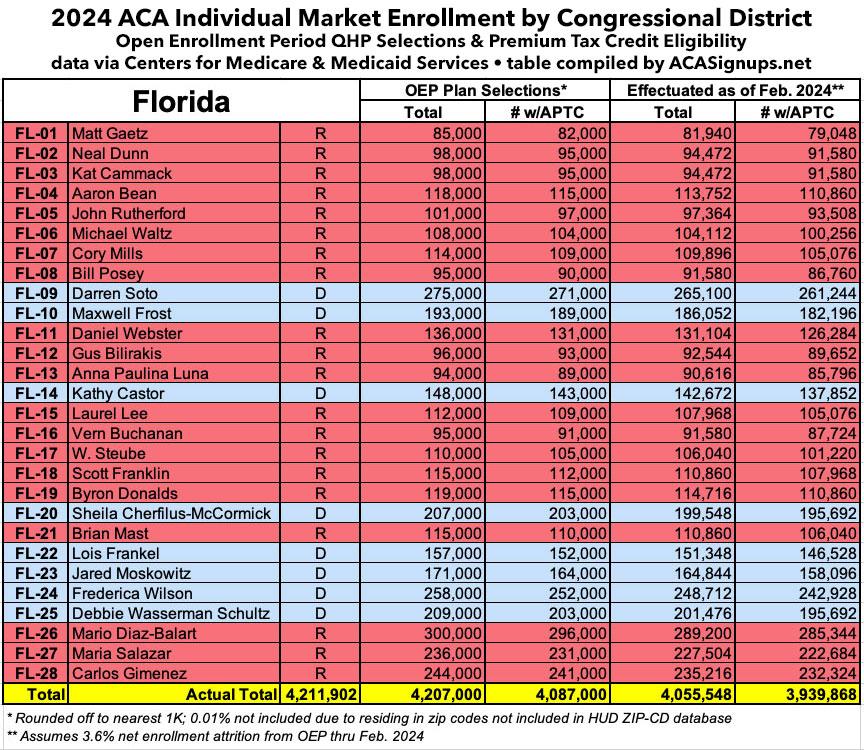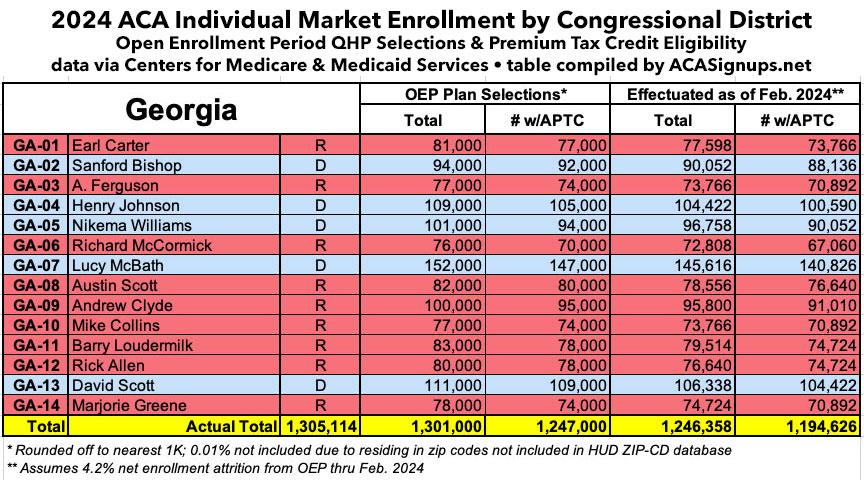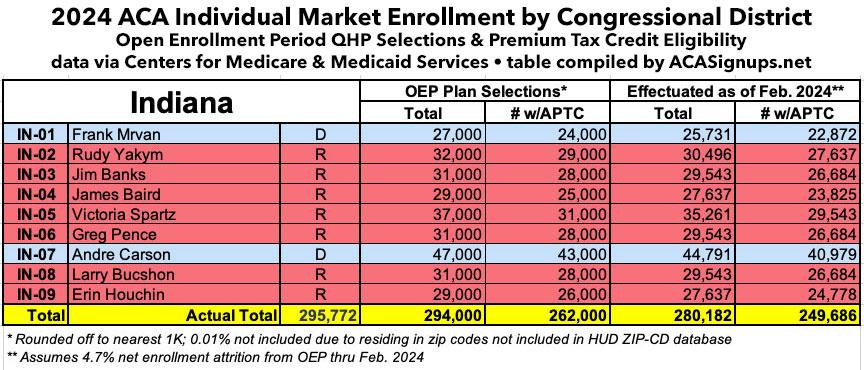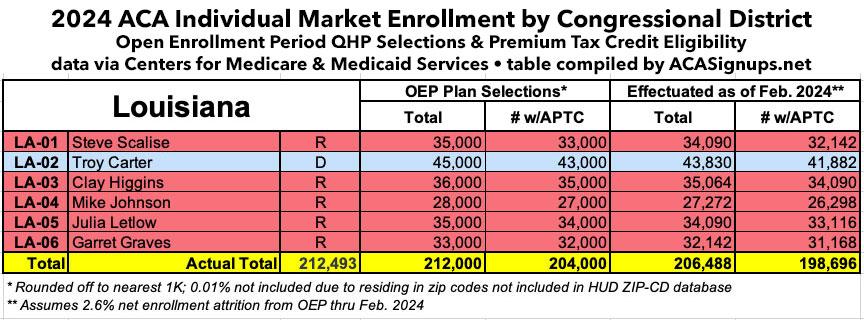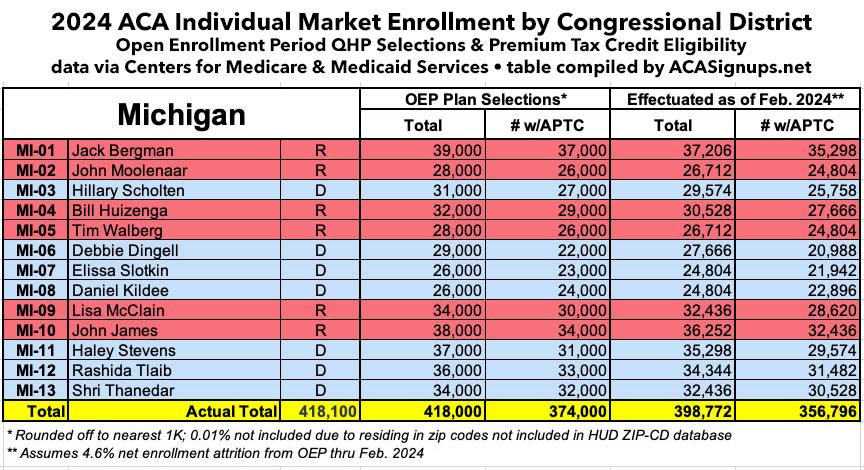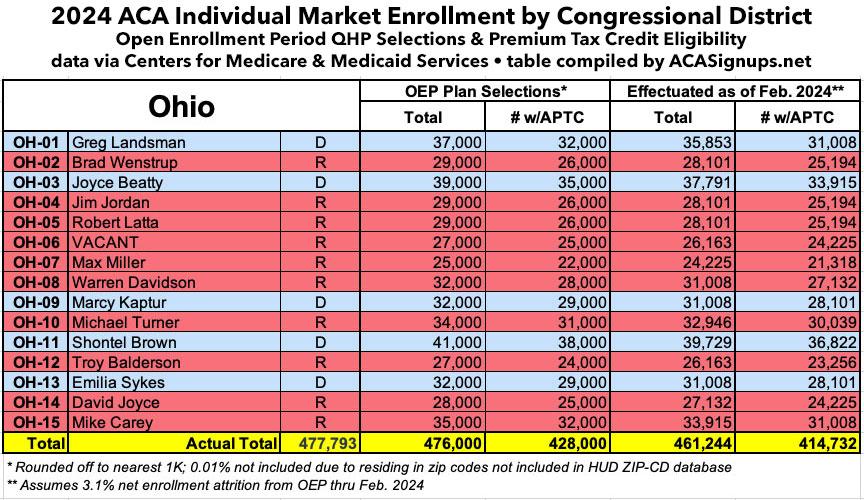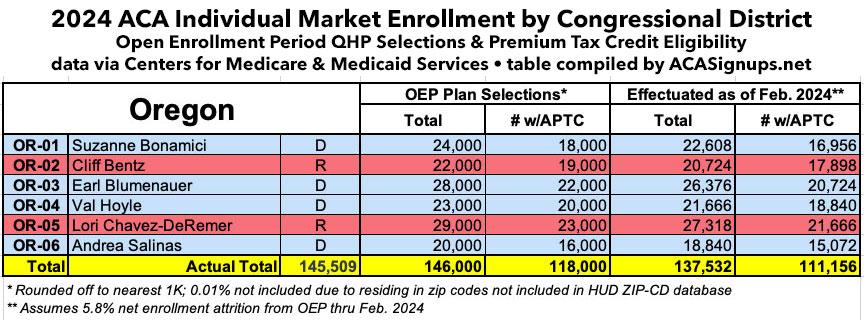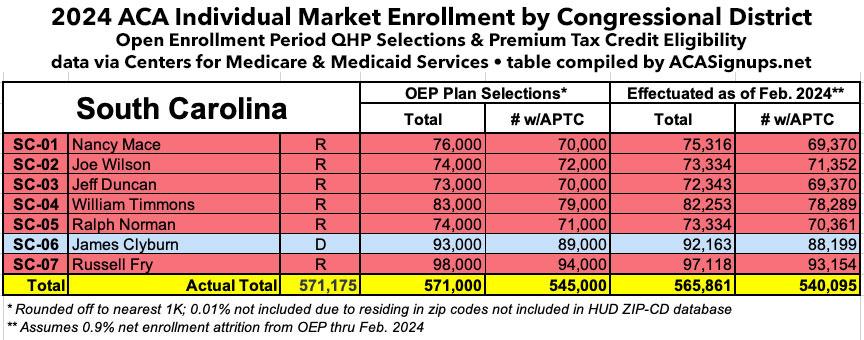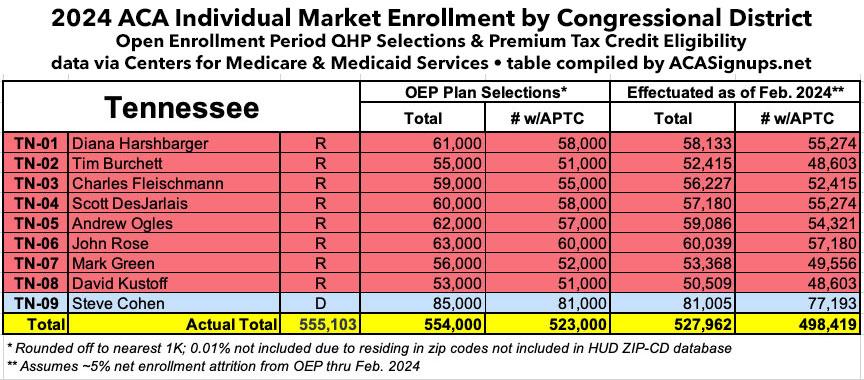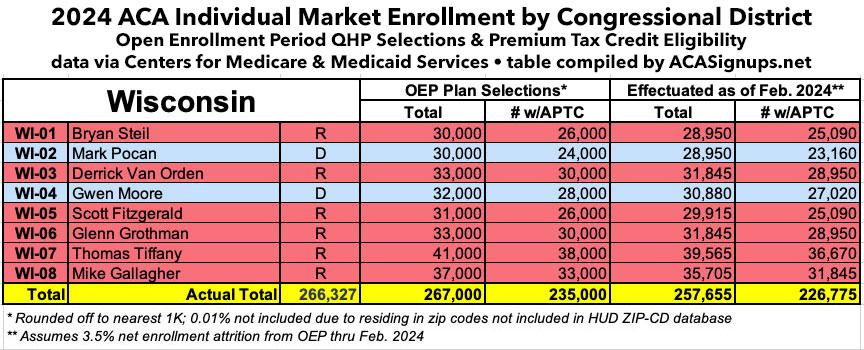How many ACA enrollees does YOUR Congressional District have? (32 states)

Welp. With last weeks news that House Republicans have decided to once again go to war with the Affordable Care Act if they gain a federal trifecta this November, it's time once again to take a look at just how many of their constituents are at risk of losing their healthcare coverage entirely or, at best, facing massive premium increases (which in most cases would have the same effect by making their coverage cost far more than they could possibly afford).
Alongside this weekends release of the final, official 2024 ACA Open Enrollment Period (OEP) data, The Centers for Medicare & Medicaid Services (CMS) has also pulled together estimates of how many residents of each Congressional District selected ACA exchange plans during the 2024 OEP:
This file contains estimates of the Health Insurance Marketplaces 2024 Open Enrollment plan selection data by congressional district, including total plan selection estimates for health plans and estimates of health plan selections with advance payments of the premium tax credit (APTC). The estimates were created using an unsuppressed version of the 2024 OEP ZIP Code-Level Public Use File (PUF), which includes total health plan selections, the count of consumers with APTC, and average APTC among consumers with APTC by zip code. The 2024 OEP ZIP Code-Level PUF only includes data for consumers with a plan selection in the 32 states that used the HC.gov platform in 2024.
This is an important (if unfortunate) point: There's only data for 32 states (comprising 249 Congressional Districts) included here. Zip code-level data for the other 18 (+DC) aren't available yet, but I hope to get ahold of this data for those states soon as well...although DC and Vermont only have one Representative (and DCs doesn't get to vote anyway), so it's really just 17 states (185 CDs) which aren't available.
CMS does not collect data on consumers' congressional district of residence as part of the enrollment process on HealthCare.gov. Therefore, we used a US Census zip code to congressional district crosswalk to determine consumers' congressional districts. In some cases, a single zip code may be split among several congressional districts. In those cases, we apportioned consumer enrollment to congressional districts proportionally to the share of all households in that zip code who lived in each congressional district. Estimates have been rounded to the nearest 1,000.
Again, the exceptions to this are the District of Columbia and Vermont, which only have a single representative for the entire district/state, where I'm using the exact numbers for both QHP selections and APTC elgibility.
A small number of consumers (0.01% of consumers otherwise meeting the criterion of our analysis) reside in zip codes that the crosswalk does not include. The consumers who live in these zip codes were not included in our analysis. Please refer to HUD's crosswalk documentation for more information about zip code exclusions.
I've reformatted the CMS spreadsheet into state-by-state tables, adding the actual House member representing it & color-coding each district by party. In addition, I've added two more columns to include estimates of the number of enrollees likely enrolled in effectuated policies as of February 2024 based on the statewide effectuation estimates from the ASPE's Health Coverage under the Affordable Care Act: Current Enrollment Trends and State Estimates report.
How to support my healthcare wonkery:
1. Donate via ActBlue or PayPal
2. Subscribe via Substack.
3. Subscribe via Patreon.



